

I often like to use old cameras as props in my watch photos. They are great examples of mechanical gadgetry and I enjoy them as objects as well as small pieces of photographic history. Below is a selection of watch photos using cameras and lenses as props (click on the thumbnails to see larger images). Following that there is more info and pics on a selection of vintage cameras.
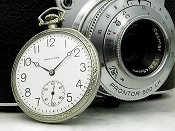 |
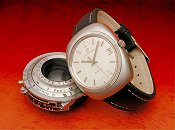 |
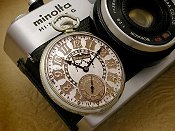 |
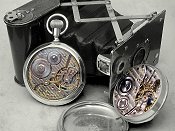 |
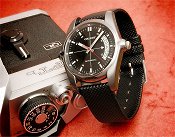 |
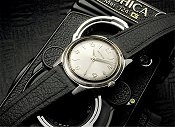 |
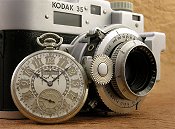 |
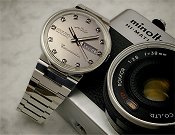 |
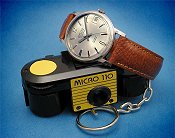 |
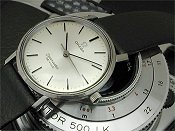 |
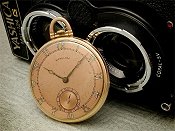 |
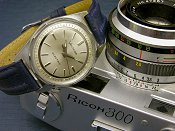 |
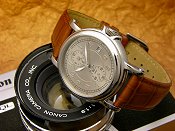 |
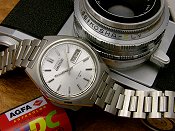 |
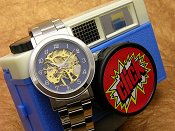 |
Below is a Kodak 35 RF, a camera introduced in 1941 and discontinued (probably with little weeping) in 1951. It was hastily designed to replace the previous non-rangefinder version in order to compete with the popular Argus C3 rangefinder. Rather than retool for a new design it appears Kodak took the expedient measure of grafting a rangefinder onto their earlier camera. The rangefinder is gear-coupled to the front lens element through a cumbersome external linkage. This resulted in a camera with a distinctive look, to say the least! It is this very look that attracted me to the camera. The Kodak 35 uses a coupled split-image rangefinder but has separate windows for focusing and composing. The lens is a Kodak Anastar 50mm with aperture range of f/3.5 - f/16. The shutter is a Flash Kodamatic with T(ime), B(ulb), and 1/10th - 1/200th sec settings. The camera originally sold for $48.
The back is removed by rotating a lever on the bottom of the camera and sliding the back down. To anyone familar with modern 35mm film cameras the loading of the Kodak will hold no surprises. It takes standard 35mm cassettes. When I received this example it still had a half-exposed roll of film in it. Unfortunately in opening the back I exposed the film and so I'll never know what the last person to use the camera photographed.
 |
 |
 |
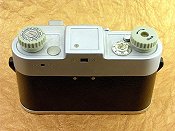 |
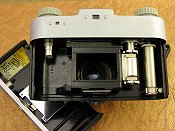 |
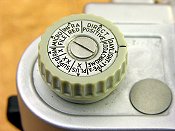 |
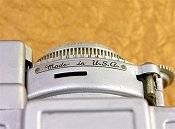 |
 |
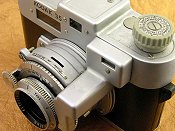 |
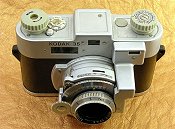 |
The camera below was bought back by my Grandfather following an all-expenses-paid overseas trip that took him to such exotic places as the beaches of Gallipoli and the fields of Passchendale. The camera is a folding Kodak Vest Pocket Autographic. Kodak made these between 1915 to 1926, and the original list price was $10. The camera uses A127 size film, with a Kodak Ball Bearing shutter with speeds of 1/12th and 1/50th sec as well as B(ulb) and T(ime) settings. The lens is a Rapid Rectilinear with aperture range f/7.7 to f/32.
As you can see the camera has its original leather case. Also note the small pivoting metal leg that swings down from the front standard to allow the camera to sit upright and level in the portrait-format position. The camera folds up into a relatively small package, measuring 120mm x 65mm, and 25mm thick. It's quite heavy. The base of the camera has a winding key and the lock for the baseplate, (the silver button is slid from "lock" to "open" to remove the baseplate allowing access to the film chambers).
The large circular plate on the caseback includes the film window wherein the progress of the film could be monitored, (the film had a paper backing with frame numbers printed on it). The rectangular section with "Use Autographic Film No. A-127" is the hinged door for the autographic feature. "Autographic" refers to a feature that allowed users to directly inscribe information onto the film itself. Here you can see the door open. Using a special film with a tissue-like carbon paper sandwiched between the film and the paper backing a metal stylus was used to inscribe information onto the film, sort of a forerunner of the data backs cameras now have. The stylus was carried in the retaining rings on the door, (it is missing from this camera). Kodak offered the autographic feature on quite a number of their early cameras.
The lens is still clear (it's behind the shutter blades), the aperture works (although it's a little sticky), and the shutter still works well. Kodak built these to last! The shutter is activated via the silver shutter plunger on the right in this picture. The prism viewfinder is to the left. It revolves to allow use in the landscape-format position. I have not put any film through this camera but see no reason why it wouldn't produce pictures.
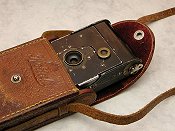 |
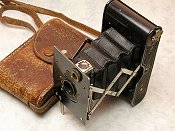 |
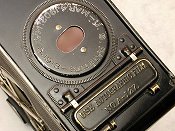 |
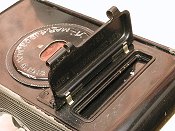 |
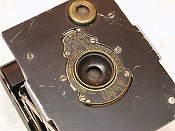 |
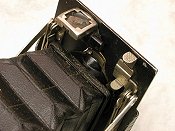 |
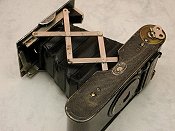 |
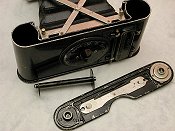 |
Top row :
Canonet 28 (old model- circa 1968)
Canonet Junior (circa 1963)
Canonet 28 (new model - circa 1971)
Bottom row :
Canonet QL19 (circa 1965)
Canonet G-III QL 17 (circa 1972)
Canonet (first model circa 1961)
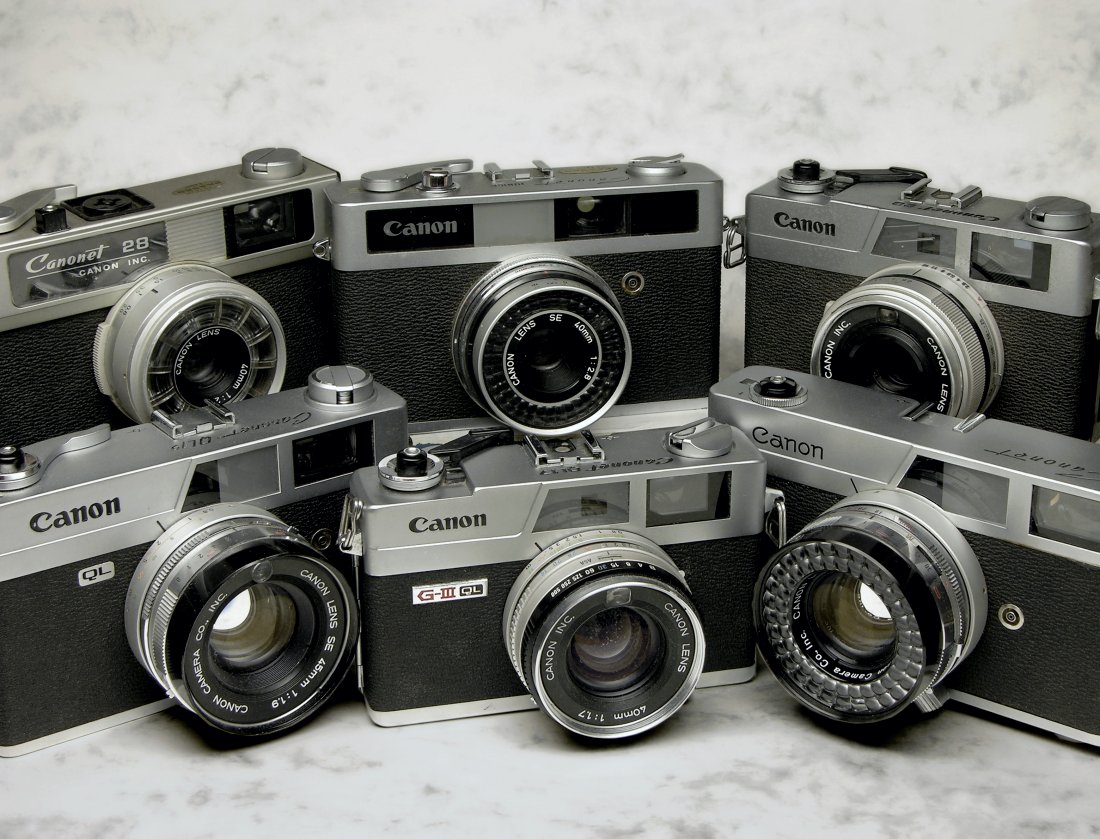
Top row:
Ricoh 500 (circa 1958)
Ricoh 300 (circa 1958)
Bottom row:
Ricoh 35 ZF (circa 1972)
Ricoh 35 (circa 1955)
Ricoh 500 G (circa 1972)
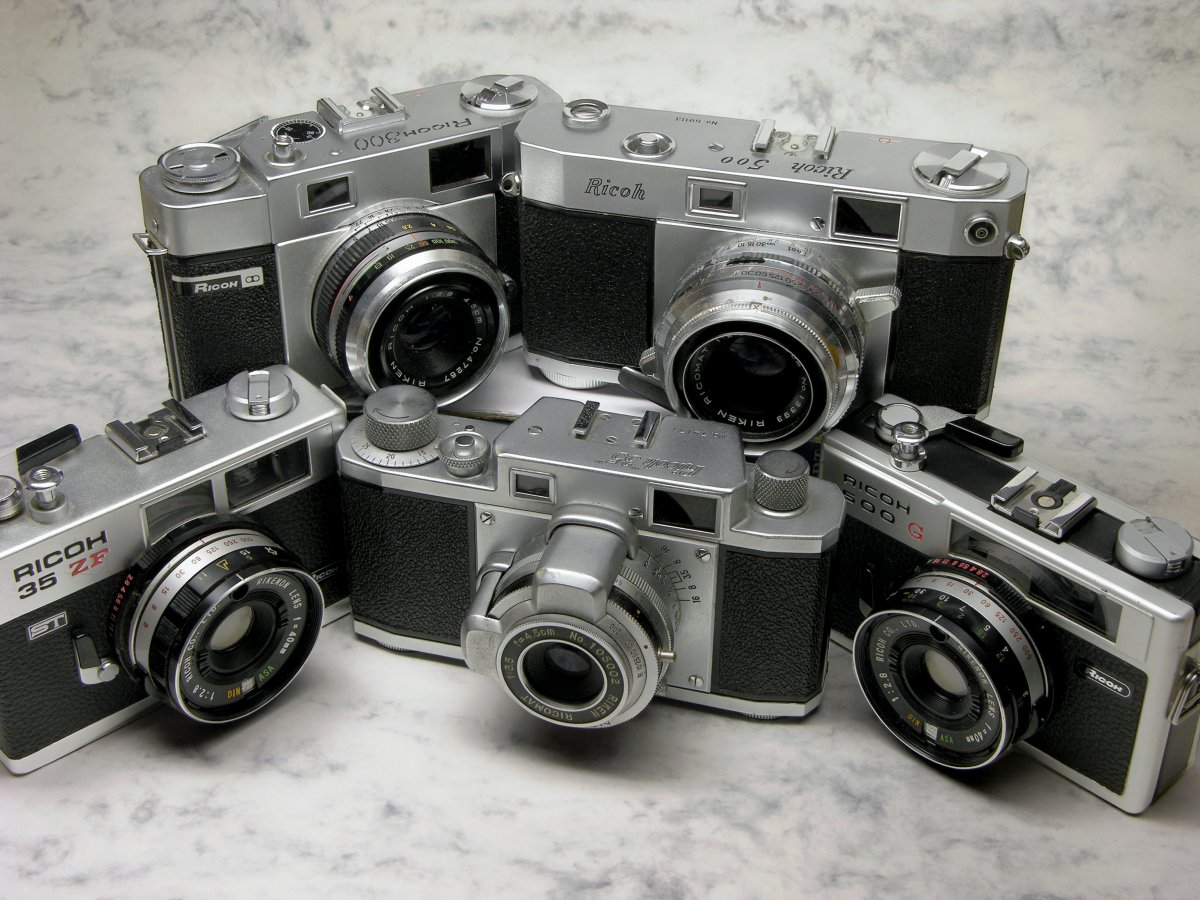
Petri 2.8 Color Corrected Super (circa 1958) and Pentina (1963).
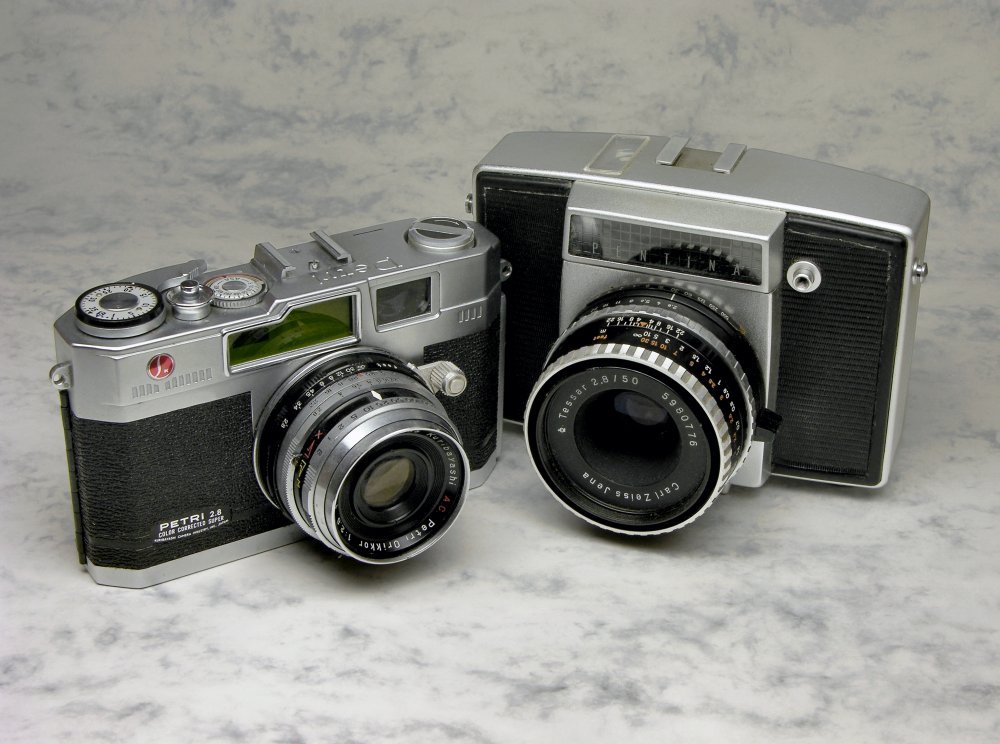
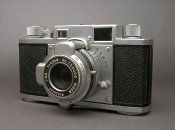 |
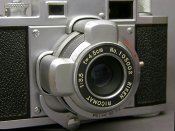 |
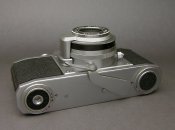 |
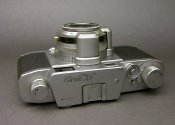 |
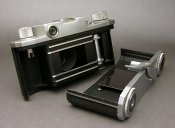 |
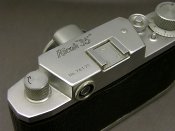 |
My old Canon FD 35mm SLR kit (A1 & FTb QL bodies).
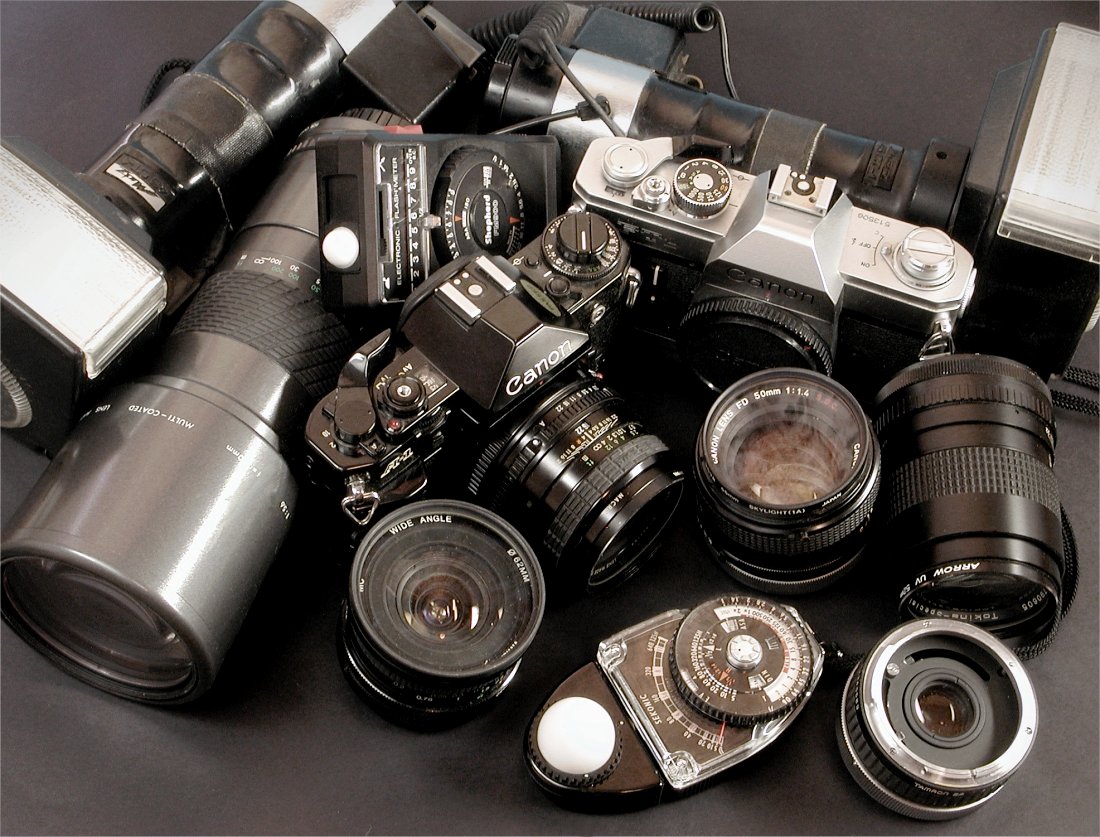
Copyright 2006 - 2009 Paul Delury